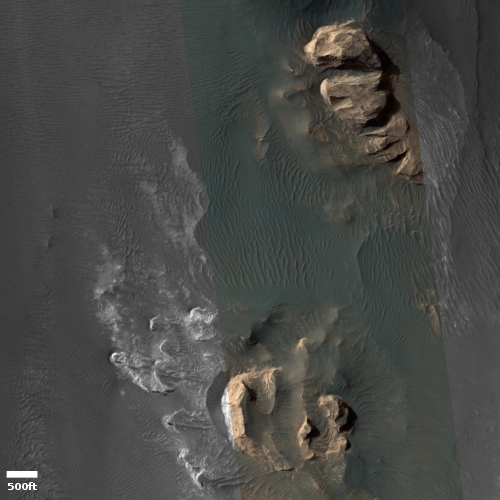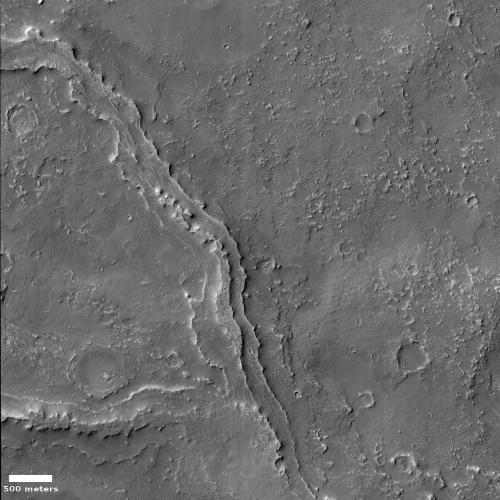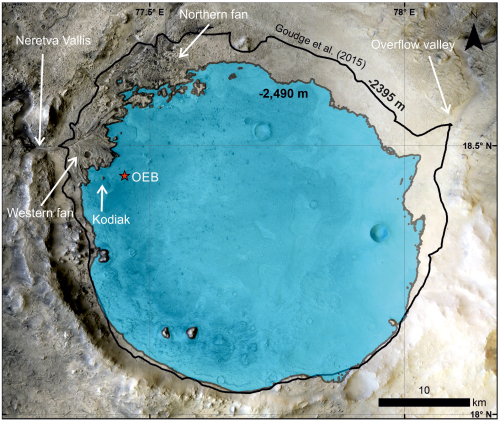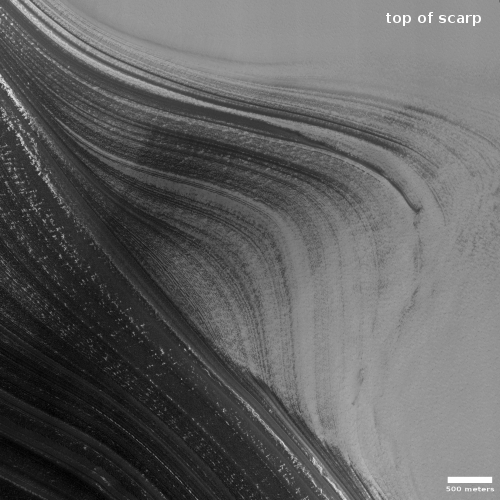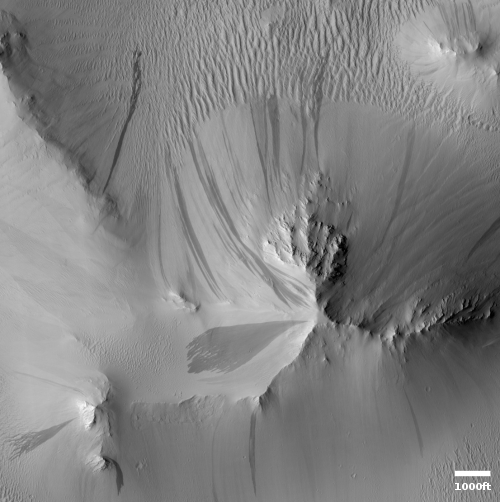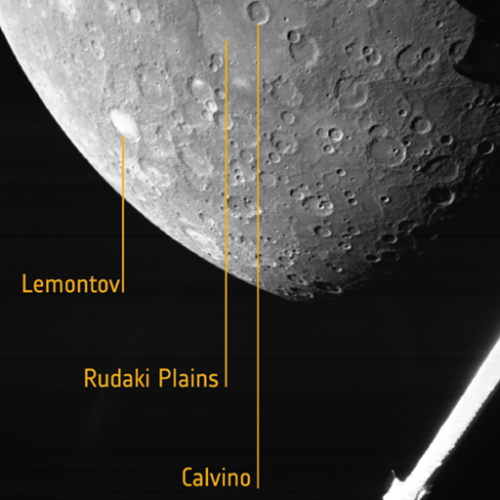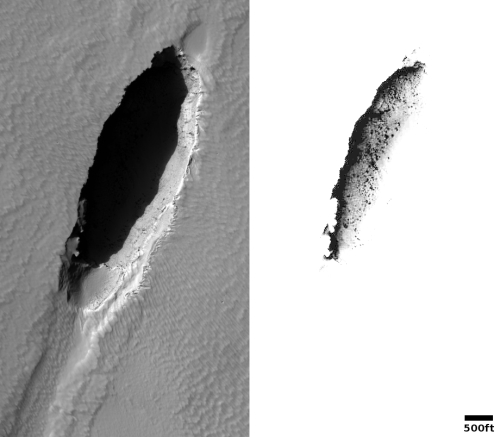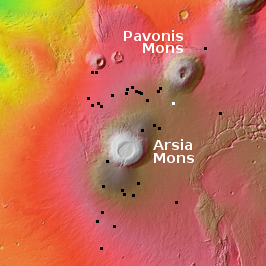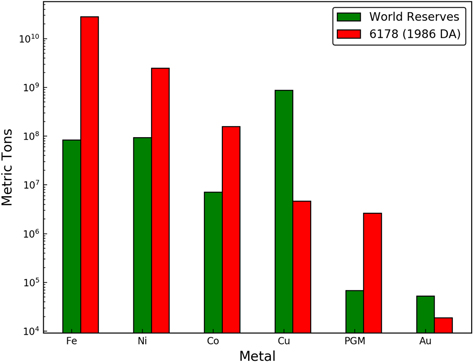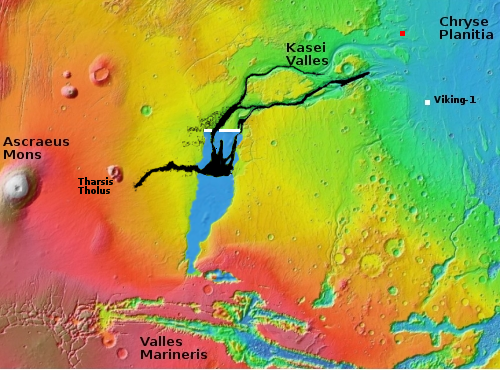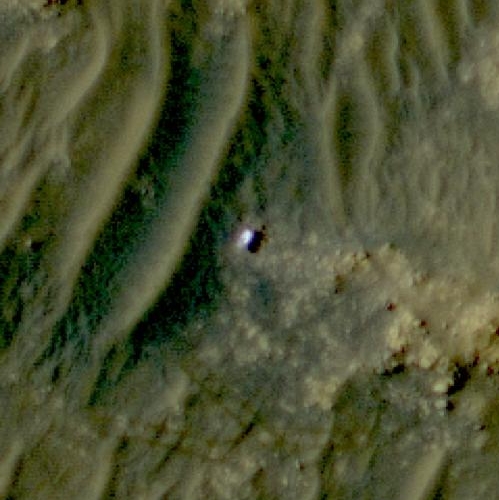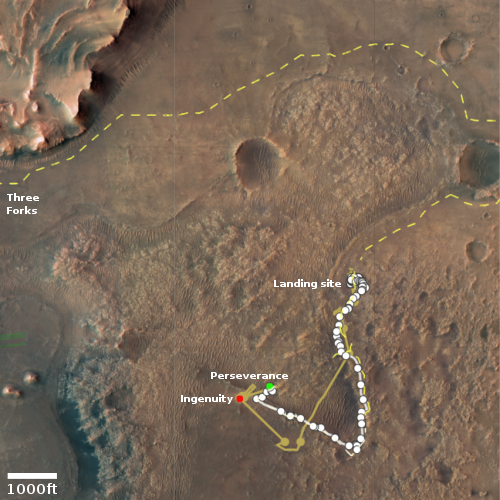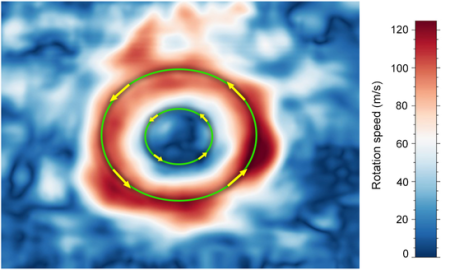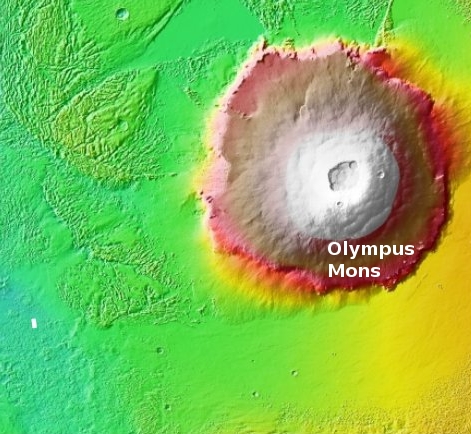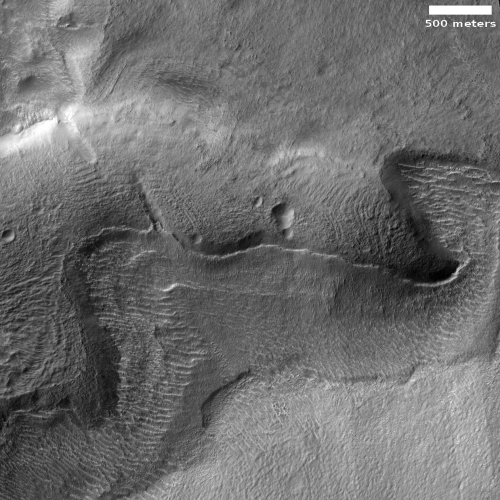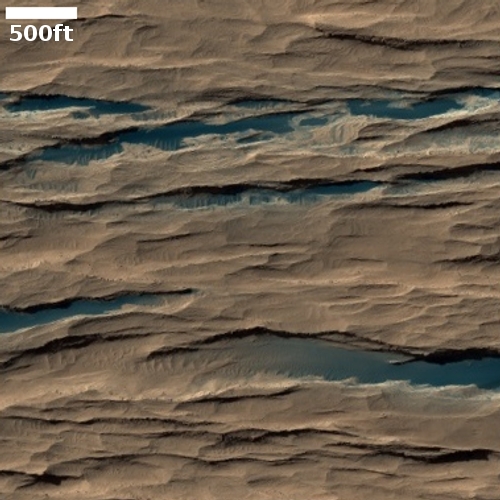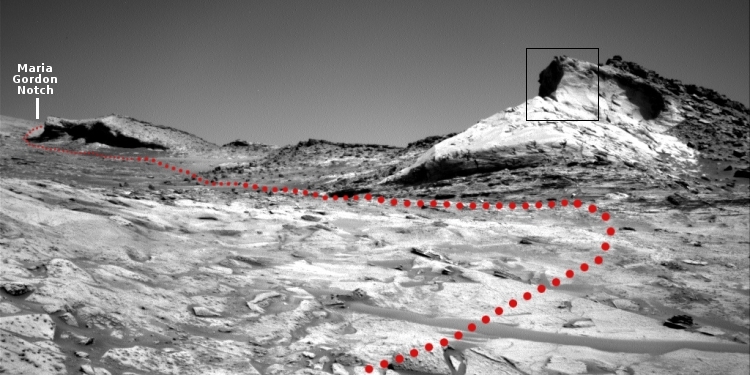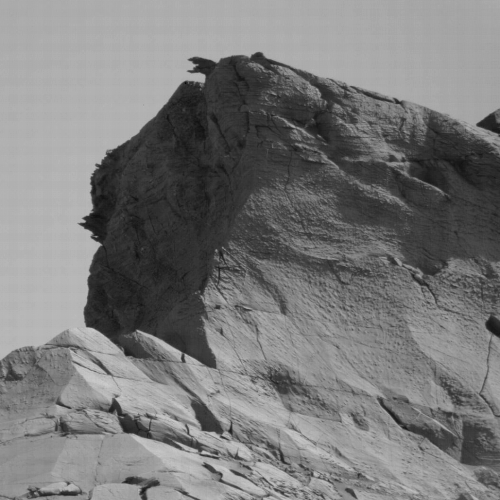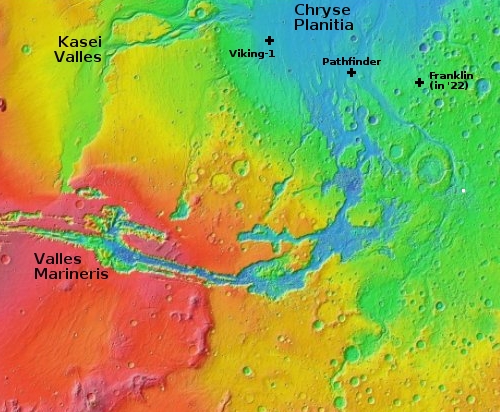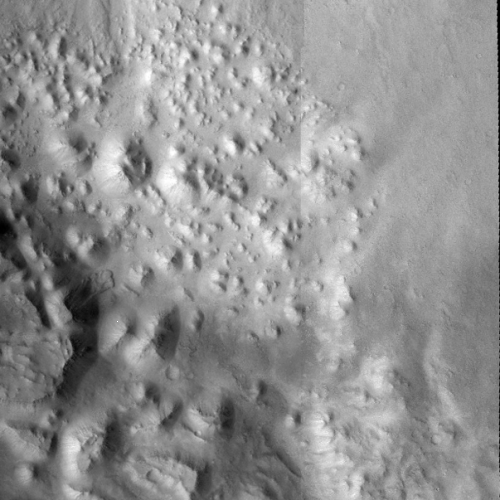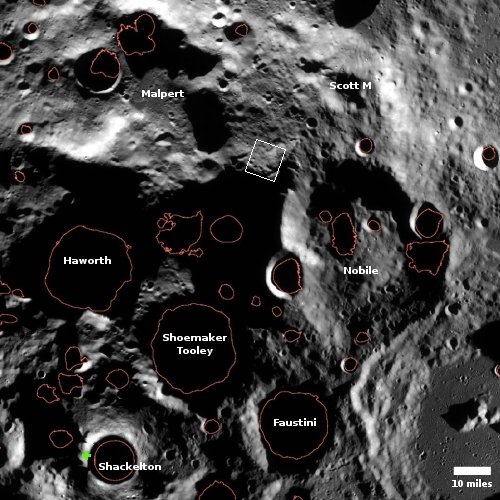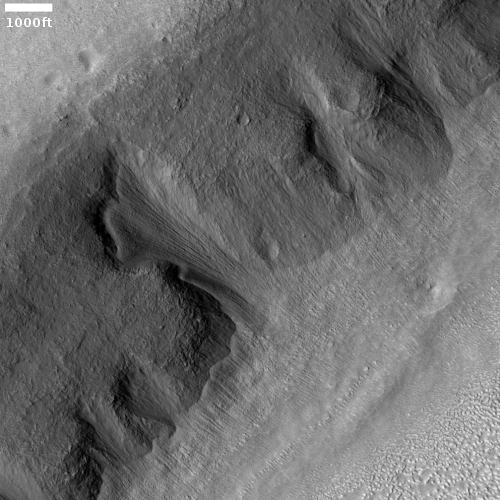Dusty chaos in Martian canyons
Cool image time! The photo to the right, cropped and reduced to post here, was taken on May 30, 2021 by the high resolution camera on Mars Reconnaissance Orbiter (MRO). It shows the dusty dry floor of the chaos region of rough terrain in a side canyon of Valles Marineris, near its outlet. The color strip and the bright outcrops suggest that this terrain contains interesting minerals and resources. To determine exactly what those materials are however requires more information not available in this photo.
This ancient chaos terrain is the leftover eroded sea floor of a intermittent inland sea, leftover water from the catastrophic floods that are theorized to have flowed out of Valles Marineris and carved its gigantic canyons.
The overview map below shows this hypothesized sea.
» Read more
Cool image time! The photo to the right, cropped and reduced to post here, was taken on May 30, 2021 by the high resolution camera on Mars Reconnaissance Orbiter (MRO). It shows the dusty dry floor of the chaos region of rough terrain in a side canyon of Valles Marineris, near its outlet. The color strip and the bright outcrops suggest that this terrain contains interesting minerals and resources. To determine exactly what those materials are however requires more information not available in this photo.
This ancient chaos terrain is the leftover eroded sea floor of a intermittent inland sea, leftover water from the catastrophic floods that are theorized to have flowed out of Valles Marineris and carved its gigantic canyons.
The overview map below shows this hypothesized sea.
» Read more

